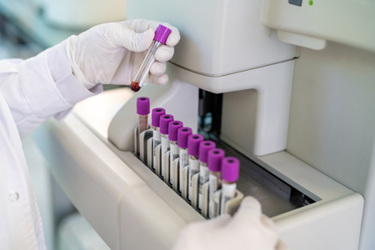The Shift From LAL To Recombinant: What Your Lab Should Expect
By Nicola Reid

Patient safety is the top priority for regulators. While the industry and the public advocate for alternatives to animal testing, regulators require strong evidence that alternatives are equally safe — or safer — than traditional methods. In endotoxin testing, alternatives are gaining traction. Before adopting an alternative endotoxin test, what should companies consider?
Endotoxin Testing And Its Critical Importance
An endotoxin is a complex lipopolysaccharide found in the outer cell wall of gram-negative bacteria. They are bound to the bacterial cell wall, making them highly stable and difficult to eliminate. While ubiquitous, they are especially prevalent in water. Unlike exotoxins, which bacteria actively release, endotoxins are passive and only transmit through direct contact.
Endotoxins are difficult to destroy and are found in manufacturing environments. When introduced into the bloodstream, they trigger a pyrogenic response, ranging from mild fever to life-threatening complications. Immunocompromised patients face a higher risk of severe reactions.
All injectable or implantable medical products must be tested for endotoxins to ensure patient safety. The first such test, developed in the 1940s, was the rabbit pyrogen test. For this method, rabbits were injected with the test product and then monitored to see if they developed a fever. Though this test was used for decades successfully, it was expensive and required the use of an animal model with a new rabbit every time.
In 1977, the FDA approved the Limulus amebocyte lysate (LAL) test as an alternative to the rabbit pyrogen test. Using a natural property of the Atlantic horseshoe crab blood, which clots at the first detection of endotoxins, the test was developed and refined to use as little blood as possible. The discovery of the crab blood coagulation properties, in response to endotoxins specifically, is attributed to Frederick Bang and Jack Levin in 1964. The new test derived from this discovery was subjected to intense scrutiny but eventually replaced the rabbit pyrogen test almost entirely.
Regulators are rightly conservative when it comes to patient safety. Although the LAL test was proven many times over, it was a comparatively long time before it was accepted as a suitable replacement for rabbits. The way has been paved for a non-animal alternative to LAL testing, but it is long.
Focus On The 3Rs
With scientists and the public becoming more conscientious of laboratory animal use and adopting the 3Rs principles of Replacement, Reduction, and Refinement for humane animal use, regulators are becoming more open to alternatives to animal testing.
The challenge with synthetically mimicking horseshoe crab blood's endotoxin cascade proteins is the cascade's complexity from activation to reaction. There are three main protein components that have been identified as part of the cascade, Factor B, Factor C and Pro-clotting enzyme. Researchers have tested multiple alternatives, from one protein to all three in sequence, to replicate the detection effects without overcomplicating the material. Several recombinant reagents have emerged as promising replacements for horseshoe crab blood in the last few years, and regulators have begun to respond.
Chapter <86> – What Will It Mean?
In July 2024, the United States Pharmacopeia (USP) Microbiology Expert Committee approved a new chapter on the use of recombinant reagents. “Chapter <86> Bacterial Endotoxins Test Using Recombinant Reagents” covers the use of non-animal derived recombinant cascade (rCR) and recombinant Factor C (rFC) alternatives to LAL testing.
In the United States, the FDA is the enforcing body for drug manufacturers, while the USP provides guidance. With the addition of Chapter <86>, the USP is suggesting a path forward, which the FDA will likely adopt. This is an important step toward a more widespread adoption of alternatives over traditional LAL even though many are reluctant due to the thought that alternative method validation requires a large amount of time, effort, and expense.
To address these concerns and simplify adoption, recombinant reagent vendors provide primary validation packages that cover key parameters such as equivalence, robustness, accuracy, and precision. By leveraging these documents, it is easier to implement recombinant reagents due to the fact that most or all of the method equivalency has already been performed. The customer will still need to perform limit of detection, specificity, linearity, and range for method suitability similar to LAL. In some cases, they may also need to test accuracy and precision for sample matrices that are different from what was tested in the primary validation package from the vendor. However, equivalency and robustness should already be established and do not require repeat validation.
Even though recombinant reagents are not globally harmonized, an approach such as this should cover the regulations no matter which agency you are submitting to across the globe. It is up to the user to perform a risk assessment on their selected strategy and talk to the local regulators before embarking on their validation journey to make sure the regulators agree with the chosen path.
The Rise Of Recombinants
There are several versions of recombinant reagents. All are synthesized from horseshoe crab genes, which are inserted into viral vectors, transfected into host cells, and the proteins are expressed in bioreactors.
Factor C is the first step in the coagulation cascade for horseshoe crabs and one recombinant alternative to LAL is rFC. Using genetic engineering, rFC was cloned. rFC is a single protein reagent, therefore as it does not have the full protein cascade to amplify the signal, there is a need for fluorescence to do so. When rFC is exposed to an endotoxin, it produces a fluorogenic compound that can be detected.
rCR replicates the entire LAL cascade more closely by including rFC, recombinant Factor B (rFB), and a recombinant pro-clotting enzyme (rPCE). With the cascade providing a full kinetic technique ending in a chromogenic reaction instead of a fluorescent reaction (gained from using rFC only) when exposed to endotoxin. Both alternatives are covered in the new Chapter <86>.
Why Companies Choose Alternatives
Sustainability is the primary driver for companies considering LAL alternatives. Ethical concerns about animal use also influence long-term strategy.
Any company looking into alternative endotoxin testing has many options. Most recombinant providers offer additional help with regulatory requirements, partially or entirely removing their clients' logistical load. By easing the paperwork, alternative providers hope to provide all the solutions that the client may need to meet their sustainability goals.
Eventually, it is likely that regulators in many countries will accept non-animal/non-animal-derived alternatives. As the data grows, so does confidence in the capabilities of these alternatives. The path established by LAL will guide the adoption of alternatives, though it will take time before the rules are harmonized between regions.
 About The Author:
About The Author:
Nicola Reid is Associate Director of Product Management, Endotoxin Products at Charles River Laboratories.
